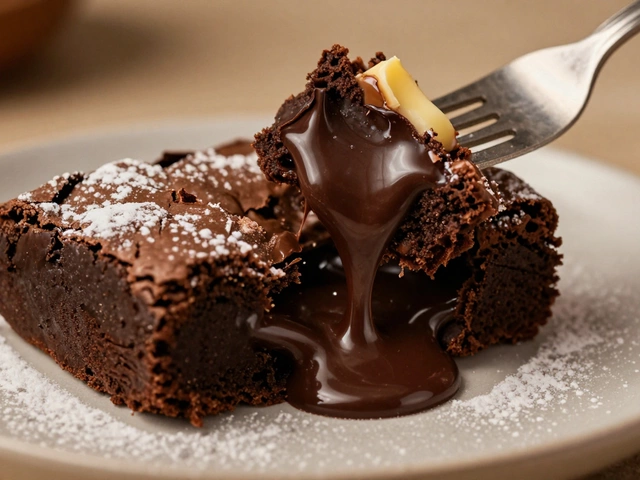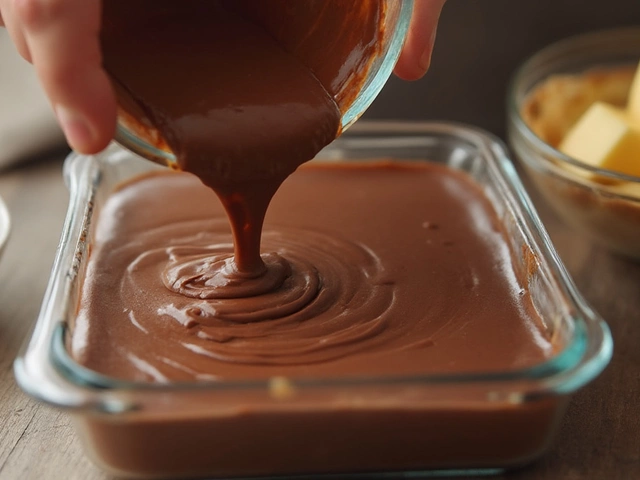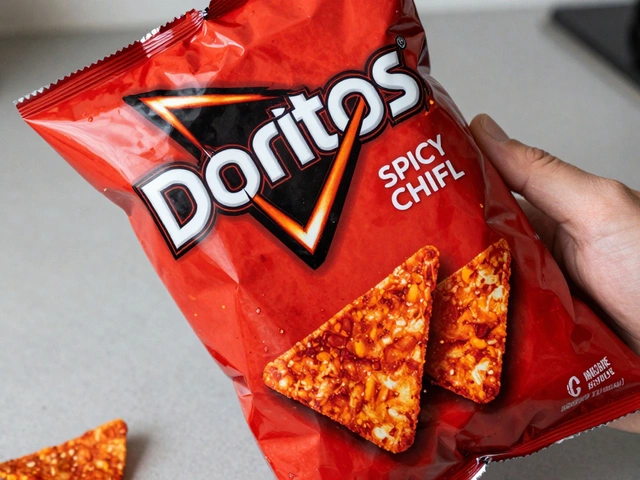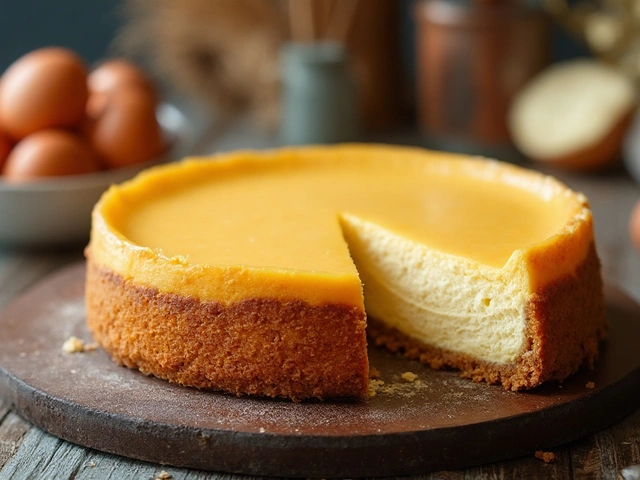
Quinoa, a staple in many health-conscious kitchens, often finds itself in the spotlight due to its impressive nutritional profile and gluten-free nature. But what exactly is quinoa, and why does it hold such a mystique for those avoiding gluten? It’s time to unravel these questions and see how this small but mighty seed can transform your baking.
For anyone on a gluten-free journey, understanding the ins and outs of this ancient grain is vital. Not only is quinoa celebrated for its high protein content and essential amino acids, but it also offers a light, nutty flavor that can elevate your favorite cakes. Let's delve into how you can incorporate quinoa into your baking repertoire, ensuring not just delicious results but also a healthful boost.
- Understanding Quinoa and Gluten
- Quinoa’s Nutritional Profile
- Using Quinoa in Baking
- Gluten-Free Cake Recipes with Quinoa
- Tips for Perfect Gluten-Free Cakes
- Incorporating Quinoa into Everyday Baking
Understanding Quinoa and Gluten
Quinoa might seem like a modern-day marvel, but it's actually an ancient grain, or rather a seed, treasured by the Incas as the "mother of all grains." This pseudocereal has risen to fame thanks to its exceptional versatility and nutritional benefits, particularly its place in the gluten-free world. But what exactly positions quinoa as a key player in gluten-free diets? To unravel this, we must first grasp what gluten is. Gluten is a protein composite found in grains such as wheat, barley, and rye, lending elasticity and a chewy texture to baked goods. While most people tolerate gluten well, those with celiac disease or gluten sensitivity must avoid it altogether, making gluten-free options like quinoa indispensable.
Despite its grain-like appearance and cooking properties, quinoa is naturally gluten-free. This fact alone has propelled it into the spotlight among those seeking alternatives to traditional wheat-based foods. When cooked, quinoa yields a fluffy, slightly chewy texture that serves as a versatile base or addition to numerous dishes. A fundamental trait of quinoa is its status as a complete protein, meaning it contains all nine essential amino acids, a rarity in plant-based foods. As the famous nutritionist and food journalist, Marion Nestle, once highlighted,
"Quinoa's status as a complete protein and its gluten-free nature make it a powerful addition to any diet, conducive to sustaining health and well-being."This attribute particularly appeals to those who follow vegetarian or vegan diets, further widening quinoa's fan base.
Beyond its protein content, quinoa is a powerhouse of other nutrients, including fiber, B vitamins, and vital minerals such as magnesium and phosphorus. These nutrients contribute to better digestive health and provide sustained energy throughout the day. Importantly, quinoa's appeal in gluten-free baking extends beyond its nutritional profile. Its natural stickiness and slight nutty flavor can mimic the traditional characteristics of gluten-based flour, making it an ideal substitute in gluten-free cakes. This nuanced role in baking highlights quinoa's growing importance in creating textures that are not only comparable but sometimes even superior to conventional baking ingredients.
Moreover, quinoa grows under harsh conditions, thriving in climates where most other crops would wither, such as the high altitudes of the Andes. This resilience, along with its ability to nourish with limited resources, not only makes quinoa environmentally sustainable but also solidifies its status as a crucial component in food security discussions globally. There's an opportunity for bakers and home cooks to embrace this grain for its many merits while contributing to a more sustainable food system. Spread across the world, quinoa now graces menus and pantries alike, appreciated for its wholesome features and culinary versatility. So, next time you embark on baking a sumptuous treat, remember quinoa's humble origins and its significance in crafting delightful, gluten-free cakes.
Quinoa’s Nutritional Profile
When considering the remarkable nutritional value of quinoa, it’s not hard to understand its surge in popularity, particularly among those embracing a gluten-free lifestyle. Quinoa is often mistaken for a grain, but in reality, it is a seed from the Chenopodium quinoa plant, which is more closely related to spinach and beets. This ancient seed hails from the Andean region of South America, where it has been cultivated for thousands of years and revered as ‘the mother of all grains.’
One of the standout features of quinoa is its complete protein makeup. Unlike most plant-based foods, quinoa contains all nine essential amino acids, making it a fantastic protein source for vegetarians and vegans. This is particularly advantageous in gluten-free diets, which can sometimes lack sufficient protein. For every cooked cup of quinoa, you'll gain around 8 grams of protein, ensuring a hearty component to any dish you create.
Beyond its protein content, quinoa is a treasure trove of other nutrients. It offers an excellent source of fiber, essential for maintaining a healthy digestive system. Each serving provides over 5 grams, significantly more than most other grains. This fiber content not only aids digestion but also helps to stabilize blood sugar levels, providing a longer-lasting energy release. Quinoa is also rich in important minerals such as magnesium, iron, phosphorus, manganese, and zinc, all of which play crucial roles in bodily functions, from maintaining immune health to ensuring strong bones.
Quinoa is a naturally gluten-free food, making it safe for those with celiac disease or gluten sensitivities. However, it’s vital to purchase quinoa labeled as gluten-free, as cross-contamination can occur during processing. Additionally, quinoa is famed for its low glycemic index, which measures how quickly food affects blood sugar levels, helping keep them stable after meals.
Quoted by the Whole Grains Council: "Quinoa is a nutrient-dense food that is as versatile as it is delicious. Its naturally gluten-free status makes it an ideal replacement for gluten-containing grains, without sacrificing flavor or nutritional value."
Moreover, the antioxidative properties of quinoa add another layer of benefits. Compounds such as quercetin and kaempferol, found in quinoa, boast anti-inflammatory effects and help fight against free radicals, potentially reducing the risk of several chronic diseases. For those looking to enhance their diet with a nutrient-rich powerhouse, quinoa undoubtedly fits the bill, offering both variety and a natural boost to daily nutrient intake, all while being a stellar ingredient in gluten-free cakes and other baked goods.
To provide a more quantifiable insight into quinoa’s nutrient richness, here’s an example of its typical nutrient composition per 100 grams of cooked quinoa:
| Nutrient | Amount |
|---|---|
| Calories | 120 kcal |
| Protein | 4.1 g |
| Fat | 1.9 g |
| Carbohydrates | 21.3 g |
| Fiber | 2.8 g |
Incorporating this nearly perfect seed into your diet doesn't just add flavor and texture but a robust portfolio of health benefits that enhance your lifestyle and culinary experience.

Using Quinoa in Baking
Quinoa has burst into the baking scene, thanks to its versatility and astounding nutritional benefits. Often considered a superfood, quinoa brings a lot to the table for gluten-free bakers. Its unique texture and flavor have been known to enhance baked goods, giving them a delicious and nutty twist. Quinoa, unlike other grains, is not only gluten-free but also packed with protein, making it an ideal substitute for those looking to combine healthy eating with culinary adventure. Its rich protein content, in particular, plays an integral role in building the structure of baked goods, which is often a challenge in gluten-free baking. This quality helps to produce a satisfying bite that isn’t compromised by the absence of gluten.
Utilizing quinoa in your baking starts with understanding its forms. Quinoa is available mostly as whole seeds, flour, and flaked varieties. Quinoa flour is an amazing substitute for wheat flour and blends well with other gluten-free flours such as almond or coconut flour. This blending process is a crucial step since quinoa flour, while rich in nutrients, can overpower a cake with its strong flavor if used excessively. Incorporating it into your recipes requires the right balance, which ensures that the final product is neither too dense nor too crumbly, a common pitfall in gluten-free baking. For novice bakers, experimenting with quinoa flour can begin with cookies or muffins before moving on to more complex recipes such as cakes or breads.
According to experts from PBS Food, "Quinoa acts as a great binder and enhancer of flavors in gluten-free baking, offering both health benefits and unique culinary possibilities."
One creative approach is to use cooked whole quinoa in the batter, offering a delightful texture to cakes and similar baked goods. This technique not only adds to the flavor profile but also to the moistness of the cake, preventing the dryness often associated with gluten-free baking. When prepping whole quinoa for baking, it’s essential to rinse it thoroughly to remove the saponin coating, which can impart a bitter taste. After rinsing, it should be cooked and cooled before incorporating it into your batter, allowing it to blend seamlessly with the other ingredients.
For those interested in trying something new, experimenting with quinoa flakes can be just the thing. They are versatile and can be used to add a bit of crunch to toppings or as a healthy alternative to traditional oats. The process of baking with quinoa flakes is relatively straightforward, often requiring little adjustment to the standard recipe amounts. Quinoa’s adaptability makes it a fantastic option for enhancing the texture and chewiness of gluten-free cakes and cookies. It’s a gentle introduction to incorporating whole grains without the risk of dramatic flavor changes.
The many health benefits of quinoa also include a rich supply of fiber, iron, magnesium, and antioxidants, which contribute to its rise as a baking staple. Offering such a wealth of nutrients means that cakes and other baked goods are not only sumptuous treats but also come with added health perks. Hence, choosing quinoa isn't just a dietary choice—it's an opportunity to imbue everyday baking with vitality and nutrition. As you become more familiar with baking using quinoa, it may become your pantry’s best asset, allowing you to craft delectable desserts that are as wholesome as they are enjoyable.
Gluten-Free Cake Recipes with Quinoa
Diving into the world of gluten-free baking opens up a landscape of creative possibilities, especially with an ingredient as versatile as quinoa. Known for its light and nutty flavor, quinoa can serve as a wonderful base for cakes that are both delicious and nutrient-rich. Incorporating it into your baking repertoire isn’t just about replacing traditional flour; it’s about embracing a new texture and taste that leaves a lasting impression.
Quinoa flour, made by grinding the seeds to a fine powder, is an excellent substitute in many gluten-free recipes. It’s especially popular for its protein content, which can help mimic the elasticity and structure usually provided by gluten. When preparing a cake, consider blending quinoa flour with other gluten-free flours like almond or coconut for a balanced sweetness and texture. Remember, baking is as much science as it is art, and finding the right mixture can make all the difference.
When starting with quinoa in cake recipes, it's vital to pair it with flavors that complement its earthy tones. Think citrus notes, chocolate, or even spices like cinnamon and cardamom to bring out the best in your creation. For a simple and delightful cake, try a lemon quinoa cake, which marries the freshness of lemon zest with the subtlety of quinoa. Combine your dry ingredients, including quinoa flour and almond flour, with a hint of baking soda for lift, then integrate the wet components like eggs, oil, and lemon juice. The result is a moist, fragrant cake, perfect for tea or dessert.
"The beauty of baking with quinoa lies in its adaptability," says culinary expert Jane Baxter. "It doesn't just mimic traditional flour—it adds a unique, rich character to gluten-free goods."
Another exciting recipe is the chocolate quinoa cake, a rich and indulgent option that's surprisingly healthy. Begin by cooking quinoa until fluffy; this forms the base of your batter, combined with cocoa powder, butter, sugar, and eggs. Blend the mixture until smooth and bake until firm. The magic of using whole quinoa grains is their ability to maintain moisture, resulting in a dense and succulent cake.
When it comes to garnishing, think simple. A dusting of powdered sugar or a glaze made from your choice of fruit preserves can accentuate the flavors without overpowering them. And remember, gluten-free cakes may have a different crumb than traditional ones but can be just as satisfying. By experimenting with quinoa, you’re not just following a trend; you’re crafting desserts that nourish and delight.
| Ingredient | Substitute |
|---|---|
| Wheat Flour | Quinoa Flour |
| Sugar | Honey or Maple Syrup |
| Butter | Coconut Oil |

Tips for Perfect Gluten-Free Cakes
Baking gluten-free cakes can sometimes feel like embarking on a culinary quest filled with more questions than answers. When it comes to creating the perfect cake with quinoa as a key ingredient, understanding a few fundamental tips can make all the difference. One of the key elements is moisture. Gluten-free cakes are often notorious for being dry and crumbly, but by adding an extra touch of moisture through ingredients like applesauce, yogurt, or mashed bananas, you can keep your cakes delightfully moist and tender. It’s all about experimenting and finding the right balance that works for you.
Another important factor is leavening. Because gluten-free flours do not contain gluten, they require additional leavening agents to provide the rise and fluffiness we associate with traditional cakes. Consider using a blend of baking powder and baking soda, along with eggs, to give your cake the lift it needs. It's also beneficial to beat your eggs thoroughly, integrating as much air as possible, which results in a lighter, airy cake.
"Quinoa is not only gluten-free but also nutrient-dense, making it a versatile addition to your gluten-free baking arsenal." - Gluten-Free Living
Experimenting with different flours and flour substitutes can open a world of possibilities in gluten-free baking. While quinoa flour can be a primary component, combining it with other flours like almond, coconut, or rice flour can enhance the texture and flavor of your cakes. It's crucial to remember that gluten-free baking often demands a mix of several flours to mimic the structure that gluten provides, so don't hesitate to explore diverse combinations.
Be sure to measure your ingredients accurately, especially when incorporating quinoa into your cakes. Adding too much of any one ingredient can throw off the balance of your recipe. Use a scale for precise measurements, as flours tend to settle and compact over time. This accuracy in measurement ensures consistent results and optimal texture. Additionally, sifting your dry ingredients can lead to a more even distribution and help avoid clumps in your batter.
The inclusion of binding agents such as xanthan gum or guar gum is another trick of the trade for successful gluten-free baking. These agents help hold your cake together in the absence of gluten, providing the necessary structure to manage softness without falling apart. Start small, as a little goes a long way, and adjust as needed based on the density and wetness of your batter.
| Ingredient | Function |
|---|---|
| Applesauce | Moisture |
| Baking Powder | Leavening |
| Almond Flour | Texture |
| Xanthan Gum | Binding |
Lastly, patience and practice are paramount. As with any culinary skill, refining your gluten-free baking techniques will improve over time. A good cake is the sum of its parts—the ingredients, the technique, and the creative flair you bring to your baking. Enjoy the process, and remember, a perfect gluten-free cake is not only possible but an achievable masterpiece.
Incorporating Quinoa into Everyday Baking
Embracing quinoa in your daily baking routines opens up a world of flavor and nutrition. Quinoa, known for its ancient roots and vital nutritive properties, is a versatile ingredient that seamlessly integrates into a myriad of recipes. It's not only about enjoying its gluten-free benefits but also about enhancing the taste profile of everyday treats. The challenge lies in understanding how this pseudo-grain, a misnomer as it's technically a seed, can replace traditional flour and what that means for your cakes and bakes. The process begins with choosing the right form of quinoa – whether it's whole seeds, flakes, or flour. Each type offers unique qualities, affecting texture and flavor in distinct ways. Quinoa flour, in particular, absorbs moisture differently, bringing a tender crumb to your cakes that can often be elusive in other gluten-free goods.
Quinoa’s nutritional superiority cannot be overstated. Packed with protein, dietary fiber, and essential minerals, it acts as a powerhouse ingredient poised to elevate the healthfulness of your baked goods. But let's not ignore taste – quinoa imparts a subtle, nutty flavor that can either take center stage or serve as a complementary background note. Enhancing this aspect can transform traditional recipes into something innovative. Consider adding quinoa flakes into muffin batter, providing texture akin to oats yet with a more unique and nuanced bite.
One might wonder how quinoa performs in diverse baking scenarios. Expert bakers often blend quinoa flour with other gluten-free flours like almond or coconut to balance its robust taste and structural properties. You'll find this mix works wonderfully for many gluten-free cakes, creating a light yet satisfyingly rich texture. Quinoa flour can cut time spent in the kitchen: its natural stickiness acts as a binder, reducing the need for additional binders like xanthan gum. This does wonders not only for the baking process but also for simplifying ingredient lists, making recipes approachable for any home baker.
If you’re still skeptical, hear from celebrated chef Sally McKenney, who said, “Using quinoa in my bakes was a revelation. It's like a gateway ingredient into the future of gluten-free baking.” The creativity doesn’t end here. You can incorporate cooked quinoa directly into batter, allowing cakes to achieve unexpected moistness and density. Do not shy away from experimentation – a sprinkle of quinoa seeds on top of bread or cakes before baking can add a delightful visual and textural element that impresses both the eyes and the palate.
Why not explore the real potential of quinoa in baking today? Try this remarkable ingredient in scone and cookie recipes where flakiness meets chewiness in just the right measure. You might even explore using quinoa milk, replacing dairy in your recipes for a lactose-free alternative without sacrificing creaminess. This modest seed invites endless possibilities to explore, encouraging us to redefine our baking boundaries. Whether you're a seasoned chef or an eager novice, quinoa offers an indispensable toolkit for creating and reinventing delightful gluten-free bakes.
These numerous trials in your kitchen will not only yield delicious results but also affirm quinoa's standing as a staple in modern baking artistry. With an opportunity to elevate not just the nutritional value but the artistry of your daily baked goods, quinoa isn't just an addition; it’s a game-changer in the world of gluten-free baking.





